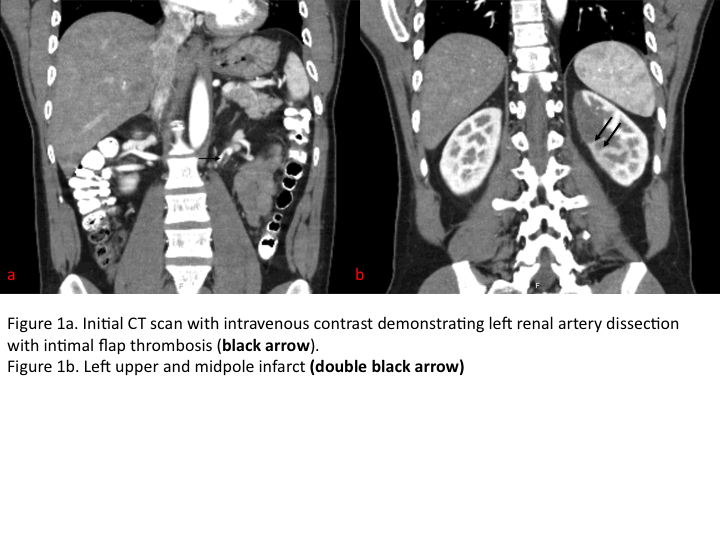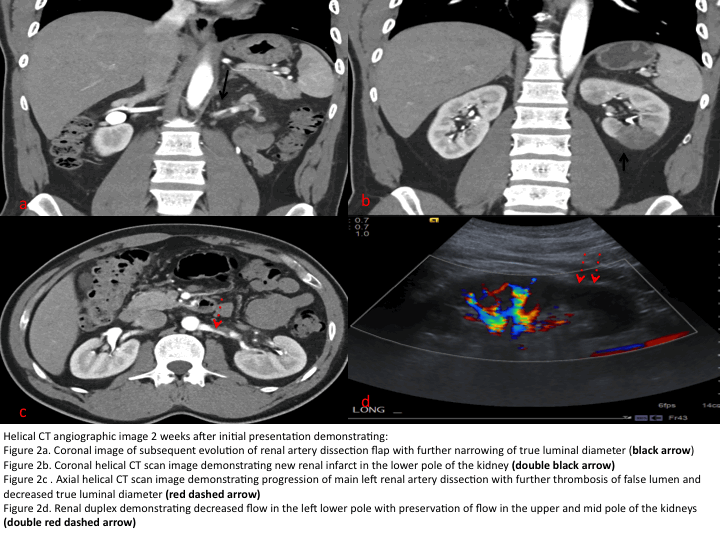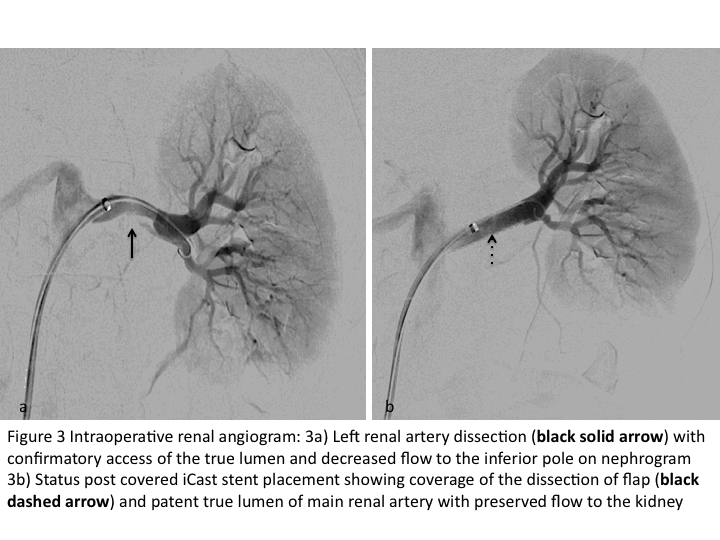Back to 2016 Annual Symposium ePosters
Endovascular Treatment of Spontaneous Renal Artery Dissection after Failure of Medical Management
Sheila Nafula Blumberg, MD MS, Gerardo A. Vitiello, MD, Mikel Sadek, MD.
NYU Medical Center, New York, NY, USA.
OBJECTIVES:
Spontaneous renal artery dissection (SRAD) is a rare disease with few cases reported in the literature. Treatment after failure of medical management is not well established.
METHODS:
We present a case of a 40-year-old male with a recently diagnosed SRAD on therapeutic warfarin who presented with progression of dissection and a new acute renal infarct. Initially, he presented with left flank pain, normotensive, without hematuria or oliguria and a normal serum creatinine. CT angiography demonstrated a SRAD with associated upper and mid pole renal infarction was diagnosed (Figure 1). He denied any inciting trauma, collagen vascular disorder, medications or drug use. His symptoms improved on therapeutic anticoagulation and he was discharged on warfarin. He returned two weeks later, complaining of recurrent left flank pain with normal blood pressure and serum creatinine, while therapeutic on anticoagulation. A repeat CT angiogram and duplex imaging were obtained (Figure 2) demonstrating progression of the renal artery dissection and narrowing of the main renal artery with a new infarct in the inferior pole of the left kidney and improved perfusion to the prior infarct (resistive index 0.58). Endovascular treatment of the dissection with a covered stent was performed with complete exclusion of the dissection and maintenance of flow through the true lumen (Figure 3). At clinical follow up, he had complete resolution of symptoms and normal renal function.
RESULTS:
The incidence of SRAD is approximately 0.05% with a 4:1 male predominance and is associated with fibromuscular dysplasia. Short-term data shows medical management to be effective at controlling blood pressure, preserving kidney function, and preventing disease progression. There are no reported treatment algorithms for progression of SRAD after acute failure of medical management
CONCLUSIONS:
This case study shows definitive surgical management should be the approach when SRAD leads to renal infarction and compromise.   
Back to 2016 Annual Symposium ePosters
|









